Remarketing Dynamics
How to get the most out of your digital remarketing campaign budget
Remarketing and retargeting tactics are an important element in many digital marketing campaigns. Effective re-marketing strategies require a good understanding and management of the audiences and marketing lists, also often called RLSA (Remarketing List for Search Ads).
In this article we will explore the dynamics of remarketing. The questions is: How does the dynamic of the audience list impact campaign potential, performance, and results?
Implications for online digital marketing campaign performance
Have you ever wondered why your remarketing works great sometimes and the at other times it is running out of steam before it bounces back again?
Unlike regular ads the remarketing ads have a special features and factors which can influence campaign reach and results significantly. So, what is behind this volatility? And what can you do to run better campaigns to win more customers faster and make better use of your resources and marketing budget?
In this blog post, which is related to a video briefing in the idea,- cast briefing series, and in the idea,- podcast series we will cover the basic questions first:
- What are the remarketing dynamics?
- How do the remarketing dynamics impact your campaign results?
- What do you need to consider when planning and running your remarketing campaign?
- How can you optimize the remarketing mix?
In the first part we will cover the fundamental. The second part will be a case study about optimization of the remarketing mix decisions. And upcoming sequel posts will be more about the strategies and tactics. You can skip ahead, though I highly suggest you take a moment to familiarize with the basic dynamics first. If you do not fully understand the dynamic I trust you will come back to this topic sooner or later.
You can watch the video and real the article below.
Common challenges
In a recent digital transformation and growth workshop I asked the participants who has tried remarketing in their campaigns? About three quarters of participants raised their hands. Then I asked who was happy with their results? And only about a third raised their hands. For the others, who were not happy there were a number of reasons. But pretty much everybody said:
“…Remarketing works sometimes very well and sometimes it doesn’t. We don’t really understand why? Therefore, we spend more on regular ads versus remarketing, just to be safe….”
Hm, I thought this is interesting. Obviously, there is some fluctuation and volatility in play.
In other words:
Remarketing is a highly dynamic process and the audience and KPIs change over time. Understanding remarketing dynamics helps you running better campaigns and winning more customers faster.
What is remarketing and how does it work?
You will read remarketing and retargeting. These are synonyms which are used in the same context of digital marketing campaigns and audience management. Also, sometimes you will read about RLSA, which stands for Remarketing Lists for Search Ads. Well, that’s a mouthful. And it basically means that you have a list of customers who have seen your ad, clicked on it and landed on a web page with a pixel or cookie. The cookie or pixel marks the customer for the list.
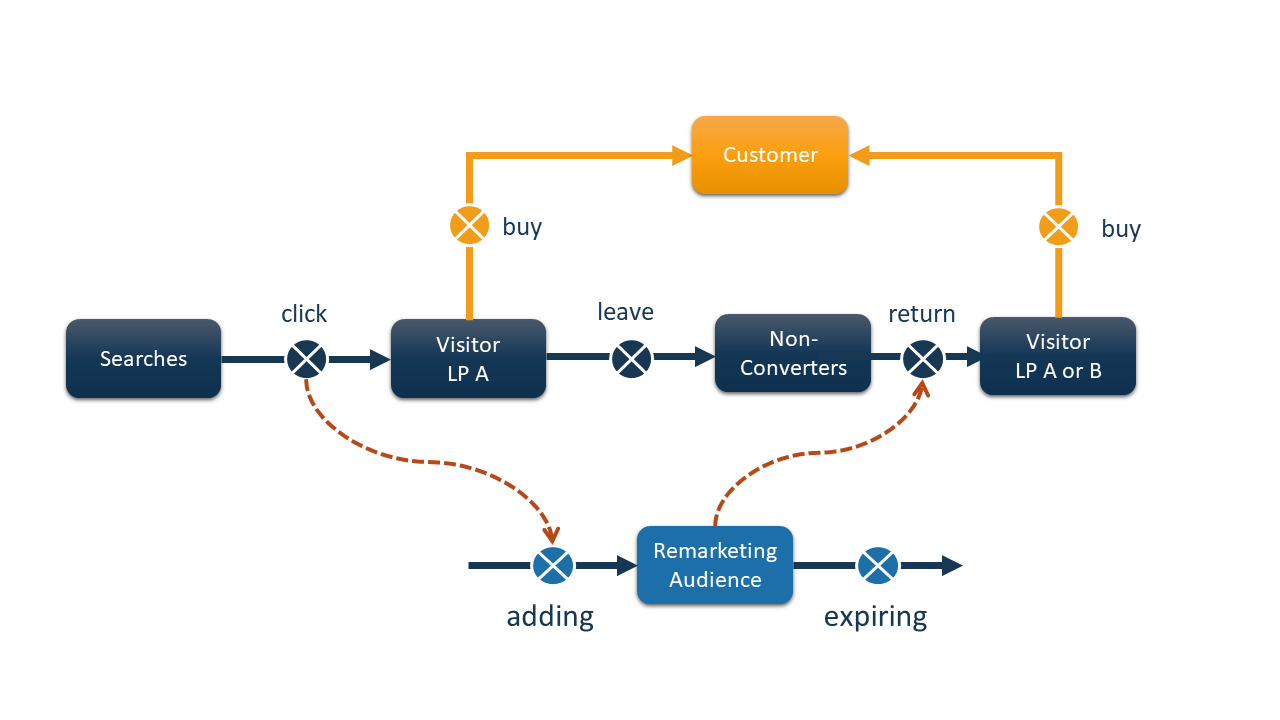
How does remarketing work?
So, just to make sure: the visitor is marked for the remarketing list only when
- she visits the website,
- the website has a cookie or pixel,
- you have remarketing enabled,
- the customer as not opted out.
The remarketing list is like a bathtub. When you open the valve the number of members on the list accumulates. The audience is draining when list membership expires.
Only then the co-flow of visitors into your audience is can occur. If this flow is interrupted, then your audience is not building up. That can happen when your pixel is not working properly.
Review the retargeting pixel regularly to ensure it is working.
That also means that if a customer is coming back, the clock of their retention period is reset.
Retention period for retargeting audience membership
When you are setting up your remarketing audience list, you need to decide how long members should be kept on the list. This time period is call the retention period. It can range usually from 30 days to 180 days and even over 500 days. This depends on the platform. Google, Facebook, Bing, Twitter, they all have different options for retention periods.
The profile of your remarketing audience over time
The size of your audience list over time is a matter of the inflows of customers into the list and outflow of expiring customer entries. For example, you may run a campaign with the following profile. The campaign runs three times for 5 days.

Factors determining the remarketing list size change over time.
With a retention period of 100 days the resulting change over time looks like this:
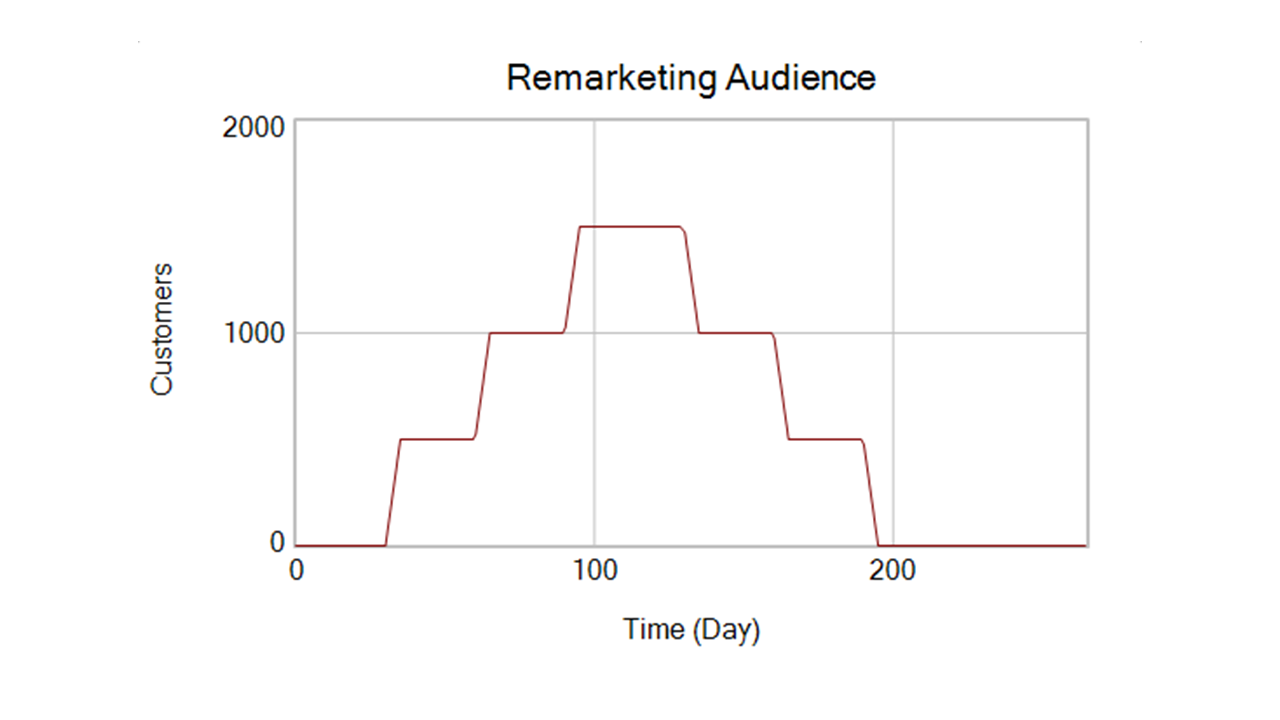
Remarketing audience list size changes over time.
But in reality, it will look more like the following chart. This caused by different factors:
- The flow of visitors to your website fluctuates over time.
- Different traffic sources besides your ads including
- Organic search traffic
- Direct traffic from repeat visitors
- Spam and junk traffic
This is an example from a remarketing audience list size change over time.
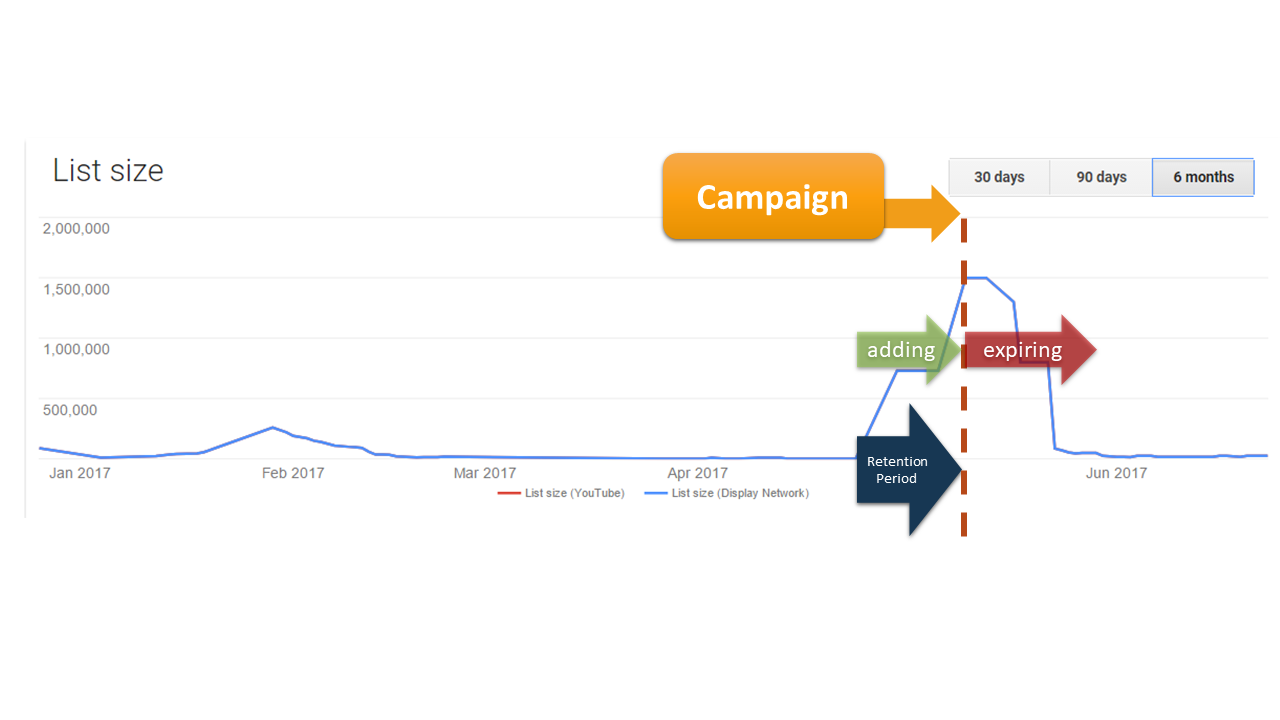
Change of a remarketing list size over time.
And you can of course check the change of the size of your audience in the audience insights report. Note how the shape of this real world example looks similar to the pyramid shape form our simulation example.
3 things to consider about remarketing audiences and campaigns
There are many facets to retargeting. Here are a couple of basic considers you need to know:
Return visits reset the clock of retargeting list membership
The bad news is that the retargeting list is not there forever. The members will be taken off the list, when their membership reaches the expiration date. This is determined by the retention period you specify.
The good news is that the start date of the retention period is reset once the visitor is coming back to your website and the pixel recognizes the visitor.
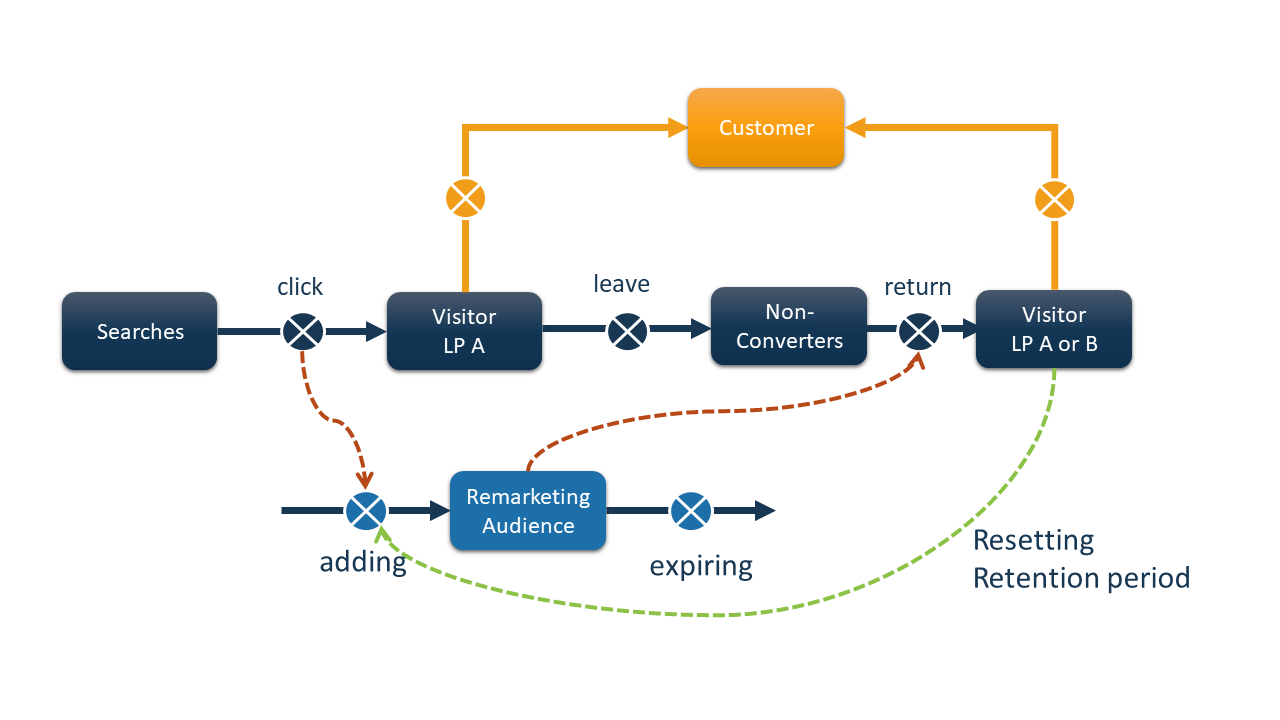
Remarketing Audience Build-up Flow.
This is an important consideration. Because this means that you can nurture your remarketing list. And it also means that a by-product of your marketing efforts is to retain customers on the list.
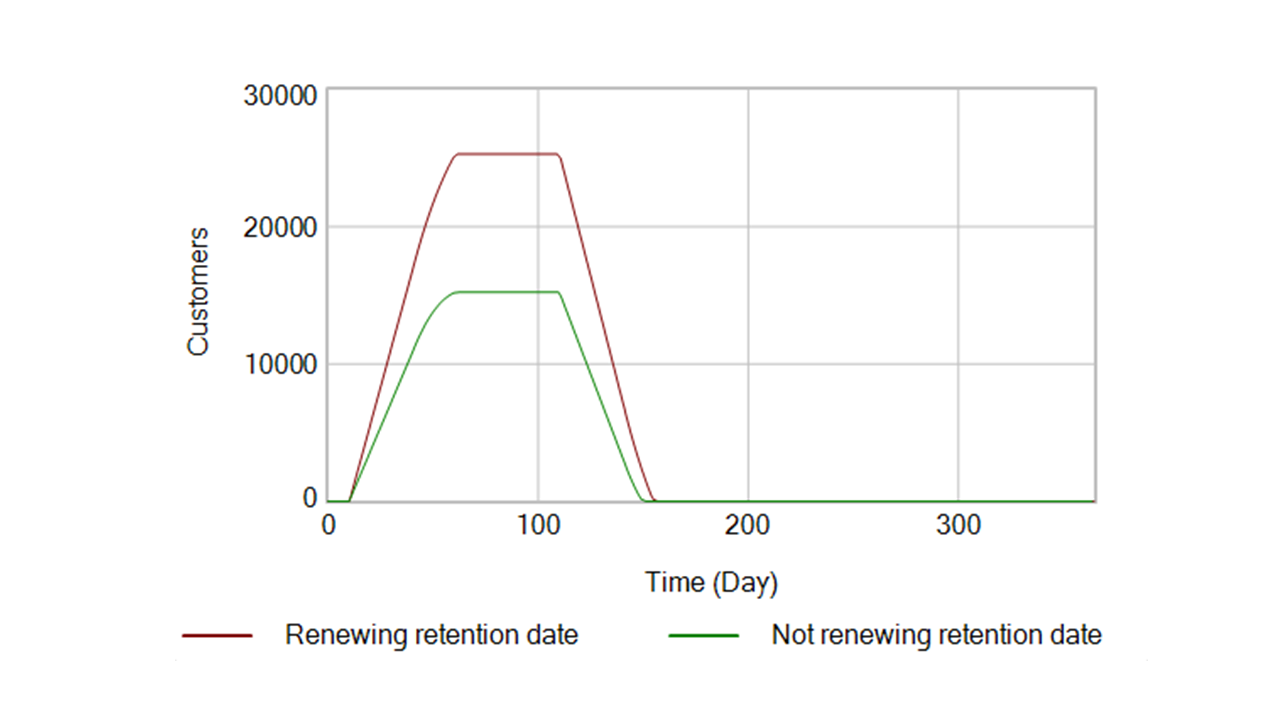
Illustration of list size change over time with renewing remarketing audience retention period.
Again, you can not switch the inflow of returning visitors on or off. It is “always on” by default. And this gives you an important instrument in the remarketing mix:
Make sure to nurture your remarketing audience list by encouraging visitors to return to your website.
Therefore, it might be prudent to have an ongoing stream visitors coming from remarketing ads. This requires reserving always a certain portion of your marketing budget for remarketing purposes.
Addressable remarketing audience
Remarketing audience does not equal addressable remarketing audience. What does it mean?
Let’s assume I clicked on your ad, visited your website and purchased your product. Why would you continue advertising the same product to me?
That’s where smart remarketing comes in: When you are setting up your remarketing campaign, make sure the define the target group precisely. For example, in this case you want to advertise to the list with the following criteria:
Customers on the audiences list who
- Have visited to product before,
- Visited the product page,
- Saw the check-out page,
- Did not visit the thank you page.
The implications for remarketing dynamics:
The size of the addressable remarketing list fluctuates over time and it is different from the size of the list with all customers.
What you see in your remarketing audience insights report is NOT the size of addressable remarketing audience.
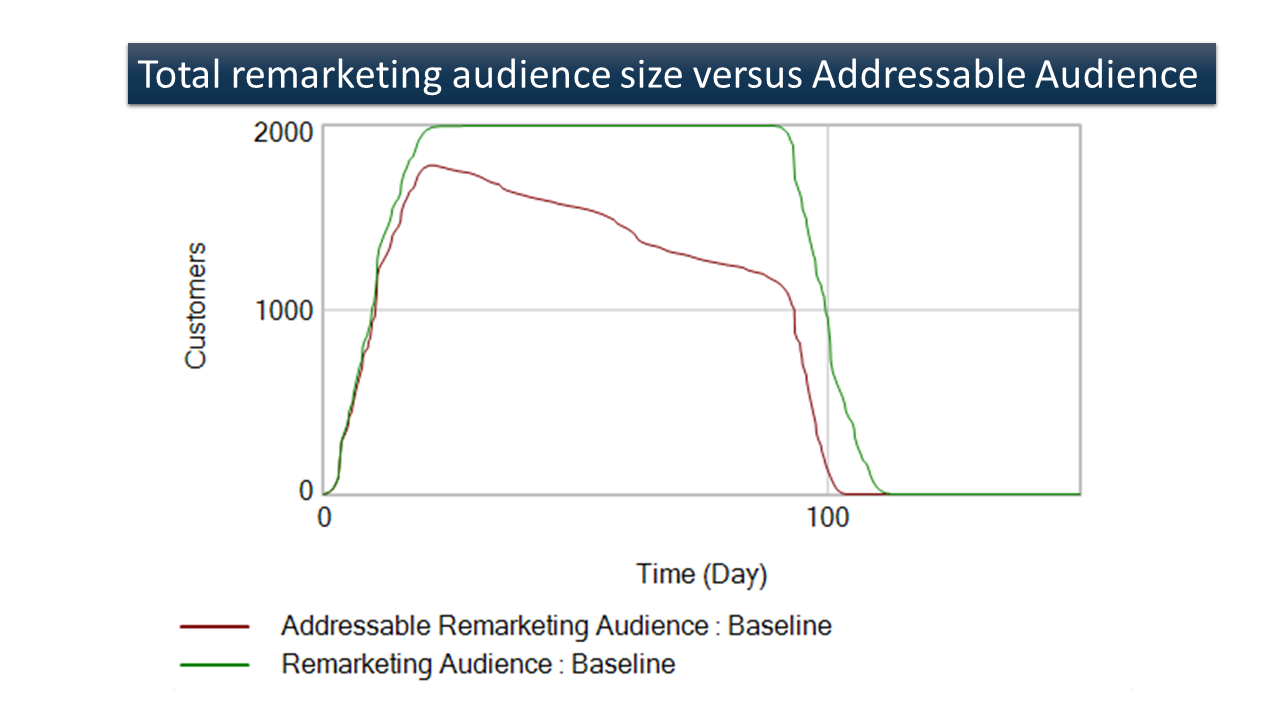
Difference between total remarketing audience list size and addressable audience list size.
Timing your digital marketing campaign matters
When are planning your campaign, make sure to consider the timing. Check out the current size of the remarketing audience and the history. As we have seen, the remarketing dynamics are a bit challenging to comprehend. It is not easy to calculate it in your head and not even in a spreadsheet.
The timing of your retargeting marketing campaign is unfortunate when your remarketing list is in decline.
It is better the either prime the pump and build up the audience first. Or you can allocate a portion of the ad spending on target new visitors. This will feed your remarketing list.
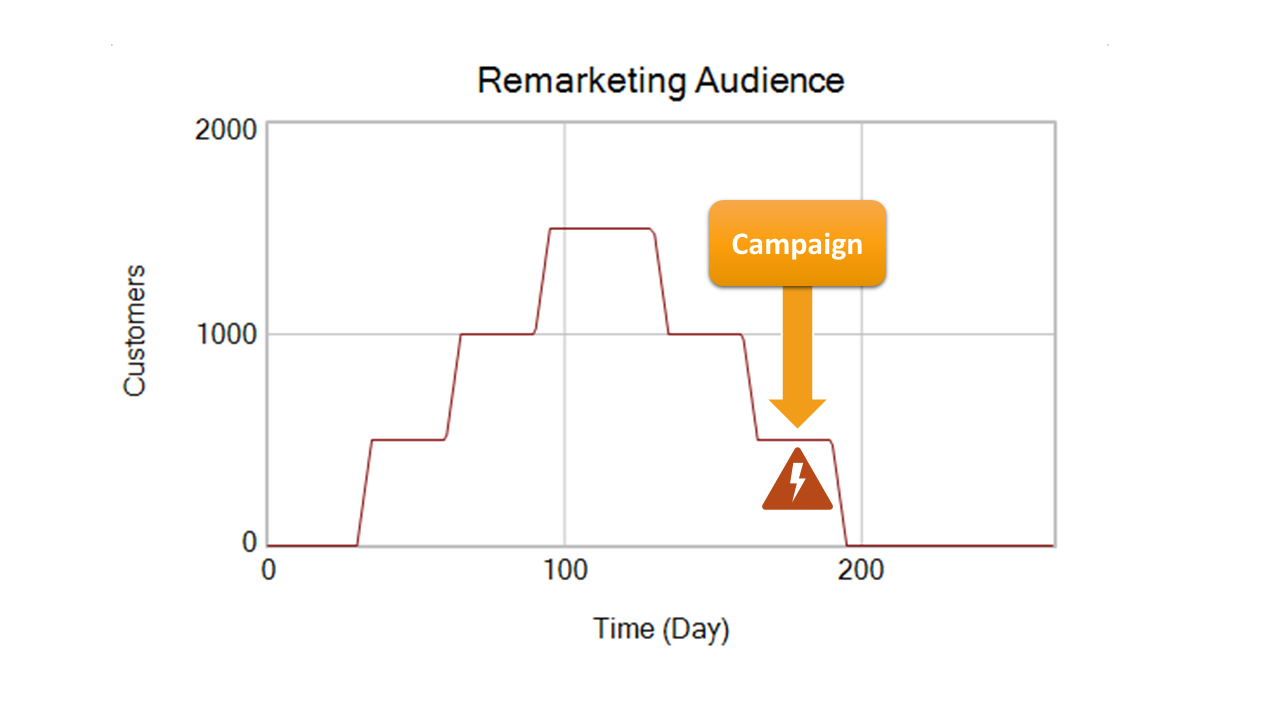
Timing of your remarketing campaign is important.
Conclusion
A remarketing campaign is going through a fairly dynamic process. The remarketing audience is like a bathtub in which the volume of water accumulates and depletes over time. Therefore, remarketing audience list size changes over time. The changes over time are determined by the retention period and are driven in inflow of customers from different sources, such as organic traffic, social media traffic, paid ads traffic and direct traffic.
Consider these fundamentals and three important aspects when planning and running your digital marketing campaign:
- Consider the expected change in list size when running your campaign.
- The addressable audience is smaller than the total list size you can see currently in the audience insights reports.
- You can nurture your remarketing audience list, by running ads which drive traffic from customers on your retargeting audience list to your website. This resets the retention period and keeps a profitable retargeting list going.
Which of these aspects are you going to consider in your next marketing campaign?
In a related blog post we will walk through an example case study which illustrates the impact of decisions in the re-marketing mix on
- customer acquisition
- profit impact and
- velocity of a remarketing campaign.
TL;DR
Remarketing campaigns are a great instrument to boost customer acquisition. Consider the fundamentals of remarketing dynamics to improve the performance of your campaign.
